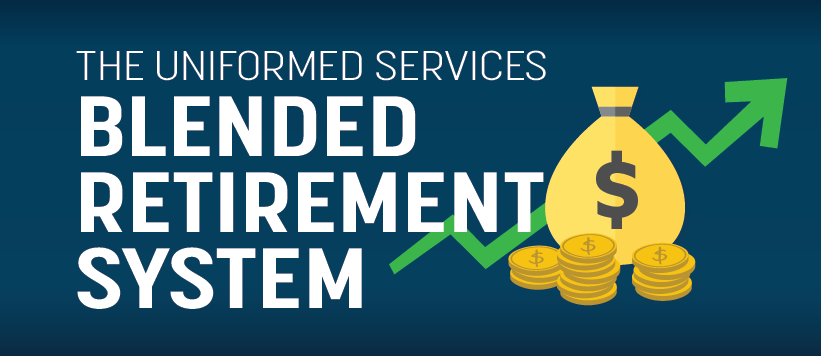There is a big change coming for the men and women serving in our armed forces, and it has the potential tosignificantly impact how they save and plan for retirement. This change is known as the Blended Retirement System or BRS. Beginning in January 2018, eligible service members, currently serving in any branch of the military, will have the option to sign up for the new BRS. This choice is available to service members serving on active duty as well as those serving in the National Guard and Reserves.
Under the current system, a service member has the option to contribute funds into a Thrift Savings Plan (TSP) to supplement and save for retirement. Once the service member serves 20 years then he or she is eligible for a monthly pension check that is equivalent to 50% of his/her monthly base pay. Under the current system, the government does not offer a match on funds contributed to the TSP. This will change if a service member opts into the BRS.
Currently, many service members do not serve long enough to be eligible for a full pension. These service membersleave the military with only what they put into their TSP, and in many cases far less, if they elected not to participate or were unaware of the program. There is education about retirement during basic training, but service members are on information overload and don’t always process what is being taught.
As a result, the government decided to implement a matching component to the TSP. If a service member hasserved 12 years or less or have less than 4320 points (on the reserve and guard side), then they may be eligible toopt-in. In January 2018, qualified service members will be notified through their branch pay site. How the match will work and how it could benefit service members in the long run:
1) A service member opts into the BRS and receives an automatic 1% contribution into a TSP account.
2) The service member chooses to contribute some of his or her funds to the account- the government will match up to 4% plus add in the 1%. This gives a total of up to 5% that the government will contribute on top of his or her contribution.
3) The service member is vested from day one if they have already been serving for two years. If not they willbe vested at the two-year mark. New service members, who begin their time of service after January 1st2018, will be automatically enrolled in the new system, will begin receiving government contributions after 60 days, and will be vested after two years.
The best part of the new system is that if service members do not serve a complete 20 years, they are still able to take all contributed funds with them when they leave service, much like a 401K in the civilian world. The trade-off is a reduction in pension. With the new system, the government will reduce the amount of pension a service member receives after 20 years of service from 50% to 40%. The service member will still receive a pension if eligible, but at a reduced rate.
Because there are many things to consider, it is imperative that service members receive as much education as possible around the new system. Once a service member makes the choice to opt in, that decision is irrevocable.
There are Personal Financial Counselor’s (PFCs) strategically placed all across the country whose primary purpose is to help support the service members of today’s military and educate them. If you know of service members who need some assistance with making this very important decision, please refer them to a PFC in their area, encourage them to take the online course being offered through the military, and direct them to visithttp://www.militaryonesource.mil/news/1/2016/october?content_id=293958 .
Guest Contributor: Susan Pascoe, AFC®

Leave a Reply